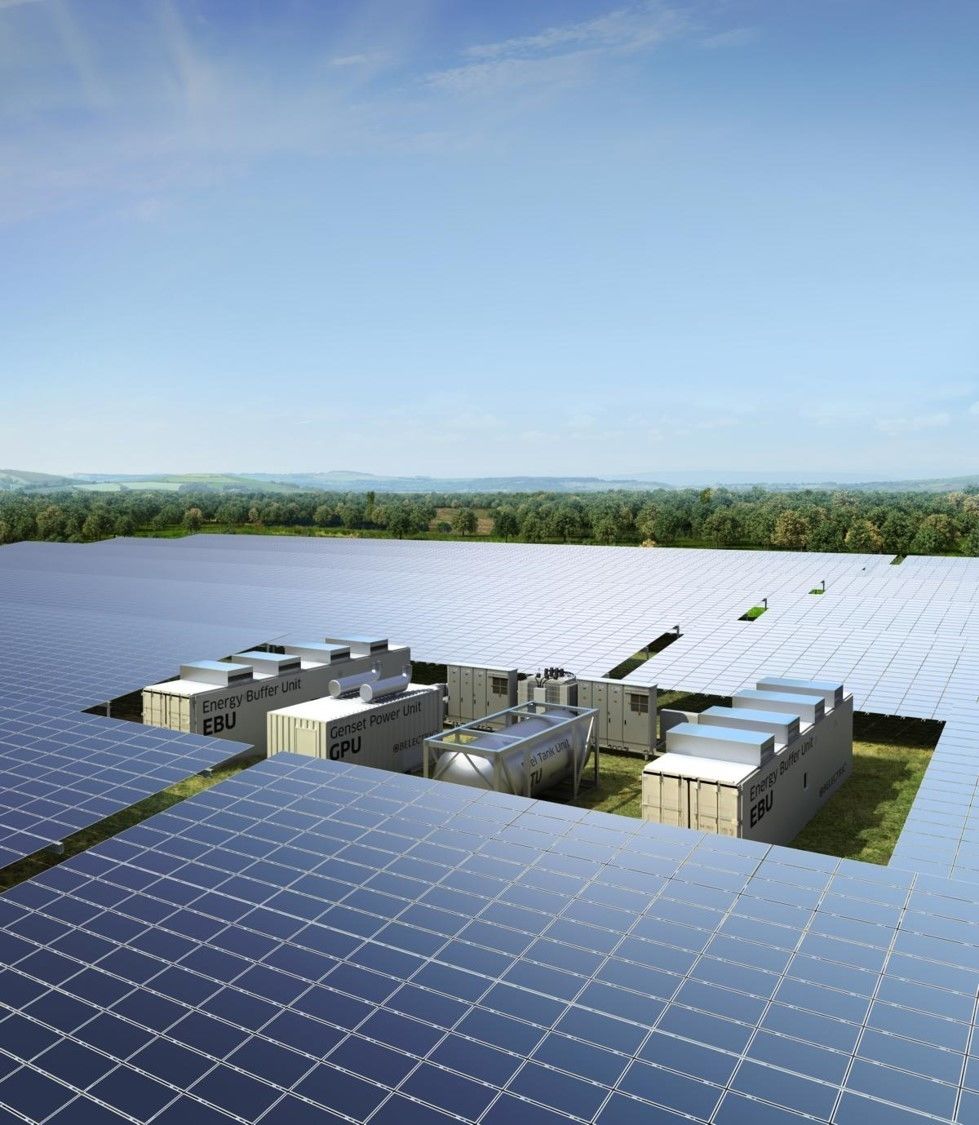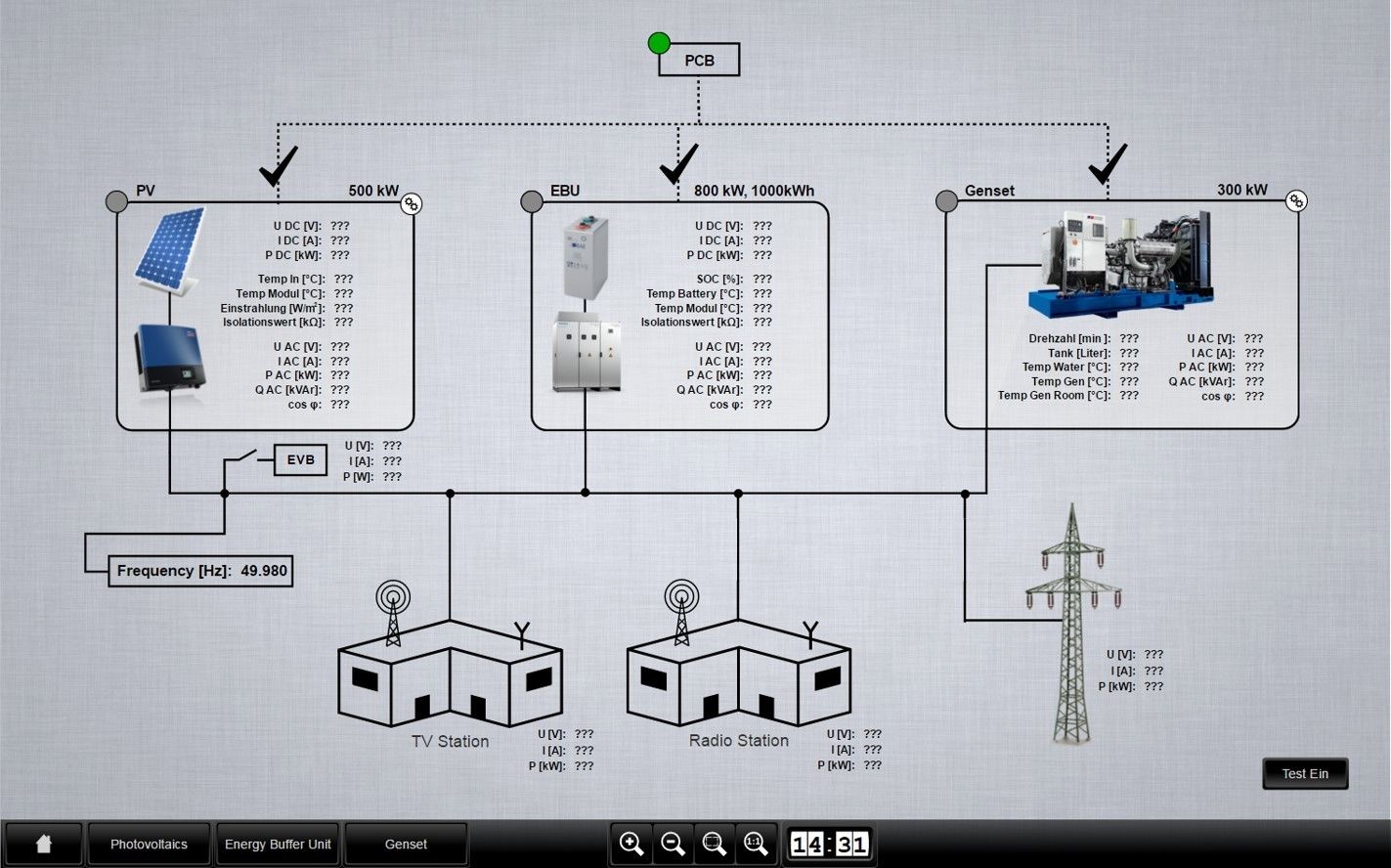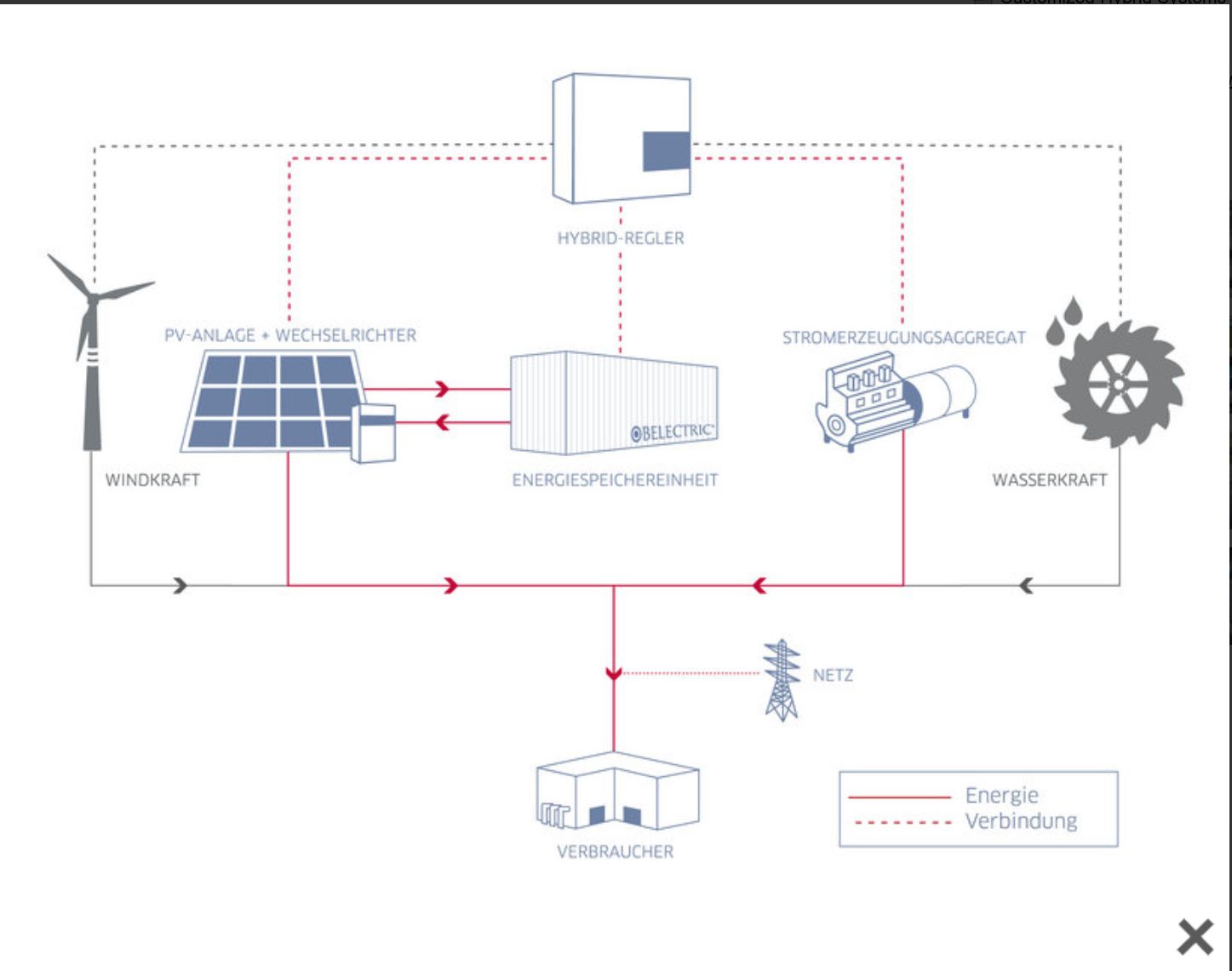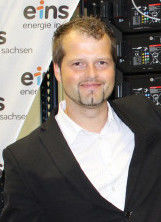When clouds roll in and block the sun, the feed-in power of a photovoltaic system can drop by more than fifty percent. And when the air is calm, there's no wind power to be generated, no matter how urgently it is needed. So what could be more natural than to combine the two systems in a way that each compensates for the other's weaknesses to feed our power grid a reliable supply? The developers at Belectric in Dresden, Germany, recognized this and now offer sophisticated hybrid power plants. Additional battery storage together with B&R automation technology and POWERLINK communication provide the required stability.

As sources of energy, the sun and wind are both a blessing and a curse. They are inexhaustible resources which – thanks to continuous technological advancements – now play a crucial role in providing the world with an environmentally sustainable supply of energy with an acceptable balance of cost and efficiency. At the same time, however, they are highly volatile and not responsive to fluctuations in demand. For utility companies, this means considerable infrastructural investments to stabilize the grid. In the event of an oversupply of feed-in power, generation plants must be throttled or even taken offline. This is frustrating for the operators of these plants, because if they don't feed anything in, they don't earn anything either. In the opposite case, any energy deficits must be compensated for very quickly by what are called peaking power plants. These operate primarily with gas generators and sometimes take a few minutes to switch on, which can be problematic with increasing feed-in from photovoltaic systems in weak grids.

Hybrid power plant ensures stable energy supply
Having recognized these problems, the developers at Belectric Solar & Battery implemented a very clever idea. "The basic idea was to combine our competencies in the fields of solar energy generation and energy storage and thus stabilize the power grid," reports Lars Fallant, who supervises implementation of battery projects. This is achieved by combining a variety of sources, such as wind and PV systems as well as combined heat and power units together with a high-performance battery storage system. These systems are coordinated by an energy management system that uses B&R control technology and POWERLINK communication. In combination with local consumers, this results in a local power grid that, if appropriately designed, operates autonomously for long periods of time – storing excess energy and feeding it into the grid on demand.
Research project: The PV plant of the future
This approach is vital to achieving sustainable energy targets, which is why eight partners – six companies and two research institutes – have joined forces to develop comprehensive technical solutions that equip inverters and other plant components to handle the heightened requirements. It is no coincidence that Belectric's engineers are taking the lead in the research project to develop the photovoltaic plant of the future. "With this project, we also want to initiate the transition from generator-based to inverter-driven networks," explains Vincent Ackermann, who is responsible for the sale of battery storage systems.
Redundant control system is a fundamental requirement
Even in the earliest stages of the project, it became clear that a standalone power plant is very demanding on its control system. "With this approach, we are entering the field of system services," says Fallant. "Here, you need to switch to a redundant system within a few CPU cycles if the main controller fails. When the hybrid system is responsible for the entire grid supply, every millisecond counts." At this point, the advantages of B&R's X20 controller range play a decisive role, because controller and network redundancy have long been part of their standard portfolio.

Integrated safety and security must not be an afterthought
It goes without saying that reliability and safety take high priority in the development of a power plant. On the one hand, the batteries must be safely ventilated and monitored, which requires safe control components for at least SIL 2. Furthermore, the fieldbus between the central and block controllers must be not only strictly deterministic, but also secure against external access. The developers found the components they needed for this in the B&R portfolio. The safety modules can be easily integrated into the functional system as required, and POWERLINK communication is fast, virtually jitter-free and – above all – secure.
Secure Remote Maintenance replaces on-site personnel
"Our plants are completely autonomous and operate without on-site personnel," explains Fallant, outlining another requirement. "That means we need to maintain a stable and, above all, secure data link to our plants." That's no problem with B&R's Secure Remote Maintenance solution, which is often used by Belectric. Via an encrypted, certificate-protected VPN connection, data is transferred securely between a SiteManager unit at the plant (with an integrated firewall) and a GateManager unit at the operator's site. "This lets us forward all error messages directly to a service provider and access the system through a web-based HMI interface," adds Ackermann.

94 MWh battery capacity installed with B&R
In addition to numerous battery projects implemented throughout Europe, one of the first hybrid plants is now up and running in Africa. There, Somaliland's ministry of information produces all the power it needs to operate its radio and TV station using a PV system with an output of 500 kWp and a 1,000 kWh battery. The auxiliary 300 kW diesel generator is used only at night and when the energy stored during the day is insufficient.
"With our next project – a combination of four 175 kW fast-charging columns with PV system and battery storage – we want to enhance the e-mobility infrastructure with a solution that reduces the load on grid connections," says Ackermann, providing an outlook toward future projects where B&R systems will continue to be the preferred choice.
 | Lars Fallant Battery Project Manager, Belectric "Our plants operate fully autonomously without any personnel on site. B&R's Secure Remote Maintenance solution lets us forward all error messages directly to a service provider and access the system through a web-based HMI interface." |